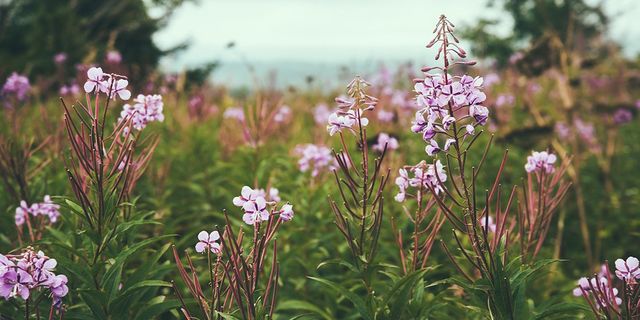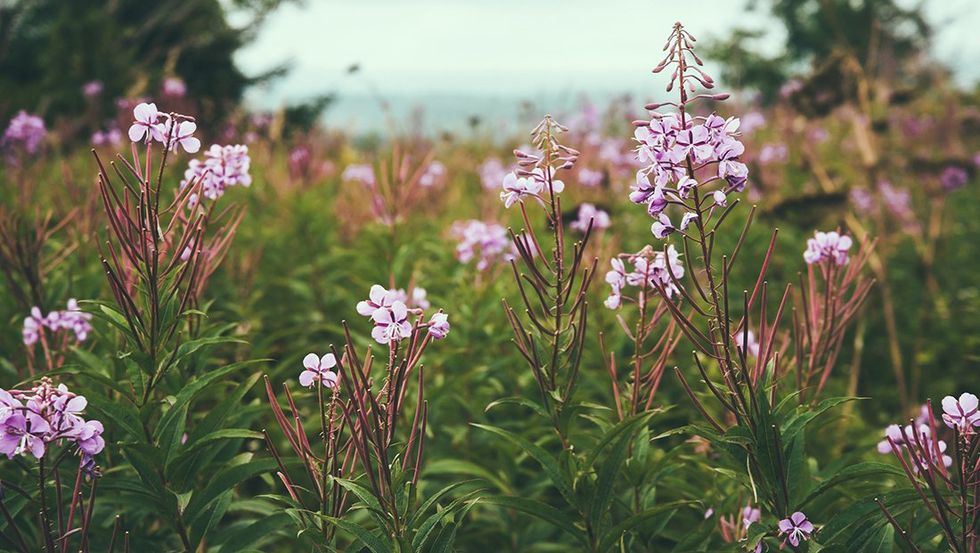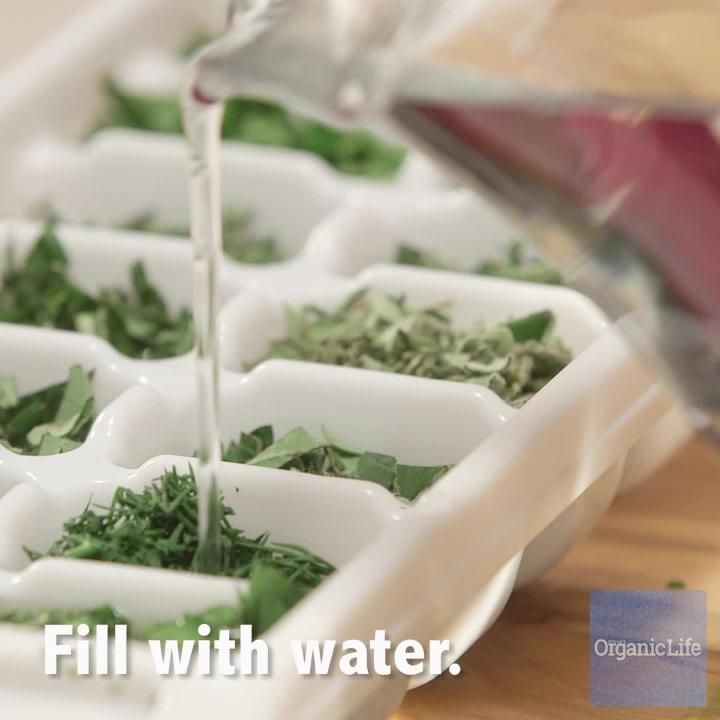Herbs are fantastic plants whether you're growing them outside or in your indoor herb garden, but who says they have to be just plain green? Many flowering herbs can hold their own in any flower garden with bright blooms and beautiful foliage. As an added bonus, you can harvest your handsome herbs for cooking or crafts and many of these flowering herbs attract beneficial insects, too. A flowering herbal border is a great compromise for gardeners with limited space because it does double-duty as an herb garden and a perennial border. Click through to see some of the most beautiful and easy plants you can grow for flowers and foliage.
Related: 4 Alternatives To Drying Herbs
Anise Hyssop
This perennial herb grows in bushy clumps, with upright branching stems topped with spikes of lavender-blue flowers and blooms in mid to late summer. The flowers attract pollinating bees and other beneficial insects to your garden. Both the leaves and the flowers are fragrant when fresh or dried, so they're a great addition to potpourri. It will self-sow or grow in new places from seed it drops, so pinch off most of the flowerheads before the small, black seeds mature and drop. Plants grow to 3-feet tall and best in USDA hardiness zones 4 through 9.
Bee Balm
The summer flowers of this spreading herb are usually red but you can also find cultivars with pink, purple or white blooms. 'Marshall's Delight' is a good pink variety that resists powdery mildew, a fungal disease that causes gray patches on the leaves. In mid to late spring, pinch out up to half of the stems at ground level to thin out crowded clumps. Plants grow to 3-feet tall and best in zones 4 through 9.
Related: The Absolute Easiest Herbs To Grow Indoors
Feverfew
Feverfew may look delicate but it's a sturdy, easy-to-grow herb that blooms from early summer to early fall. The white-petaled, yellow-centered flowers look like tiny daisies. Pinching off the spent flowers can extend the bloom season and it will reduce the number of self-sown seedlings. You can also cut the whole plant to the ground after bloom for a flush of new growth. Plants grow about 2-feet tall and in zones 4 through 9.
Joe-Pye Weed
Tall Joe-Pye is the glory of the late summer garden. Its domed clusters of rosy pink to light purple flowers tower over shorter herbs, with sturdy stalks in multistemmed clumps. This is one of the Flowers That Promise To Bring Monarch Butterflies To Your Yard, as well as lots of attention from other garden visitors. Stems reach 6- to 8-feet tall and bloom in zones 3 through 8.
Lavender
Lavender is as pretty to look at as it is heavenly to smell and it keeps its distinctive fragrance when dried. In midsummer, English lavender produces spikes of purple-blue flowers on slender stalks over shrubby clumps of narrow, silvery leaves. 'Munstead' and 'Hidcote' are more compact, growing only 12- to 18-inches tall, with dark purple flowers. Lavender is a good choice for the front of the border, or a container garden, but it must have good drainage to stay healthy. It grows best in zones 5 through 8.
Related: 7 Cool Things We Never Knew Lavender Could Do
Marsh Mallow
Marsh mallow is a beautiful herb that produces attractive pink or white, hollyhock-like flowers for most of the summer. The broad, oval to heart-shaped, gray-green leaves are velvety soft. Plants grow 3- to 4-feet tall and in zones 3 through 8.
Meadowsweet
Also known as queen-of-the-meadow, this graceful perennial herb produces frothy clusters of creamy white flowers in mid to late summer. The large, dark green leaves grow in creeping clumps so divide plants every two to three years to control their spread. Plants can reach 3- to 4-feet tall in bloom, although they may be shorter if the soil is dry, and in zones 3 through 9.
Purple Coneflower
Purple coneflower, also known as echinacea, produces clumps of sturdy stems topped with large, rosy pink, daisy-like flowers that have raised, orange-brown centers. Grow Your Own Echinacea that bloom from midsummer into fall, especially if you snip off the dead flowers in summer. The blooms of Crimson Star are particularly deep rose-pink and you may also find cultivars with white flowers, such as White Swan. Plants grow 3- to 4-feet tall and in zones 3 through 9.
Rue
Even if it didn't bloom, rue would be worth growing for its foliage alone. The bright blue-green leaves are deeply divided, giving the whole plant a delicate, lacy look. In midsummer, the clumps are accented with clusters of bright yellow-green flowers. Good drainage is essential for healthy growth. Plants grow 2-feet tall and best in zones 5 through 9.
Yarrow
Common yarrow produces flattened clusters of red, pink, or white flowers on slender stems clad in feathery green foliage. These summer flowers are great for fresh or dried arrangements. If you prefer yellow flowers, you could substitute another species or hybrid. Plants are usually around 2-feet tall and grow in zones 3 through 8.














